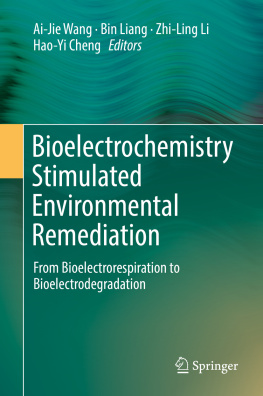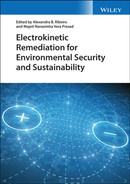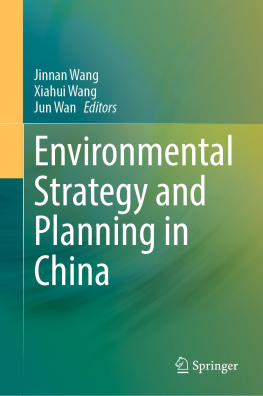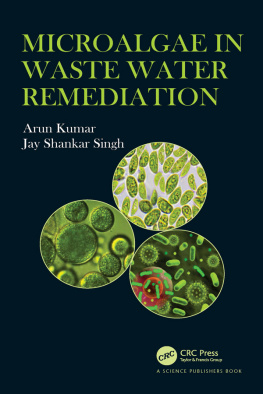Ai-Jie Wang - Bioelectrochemistry Stimulated Environmental Remediation
Here you can read online Ai-Jie Wang - Bioelectrochemistry Stimulated Environmental Remediation full text of the book (entire story) in english for free. Download pdf and epub, get meaning, cover and reviews about this ebook. year: 2018, publisher: Springer Singapore;SPRINGER Verlag, SINGAPOR, genre: Romance novel. Description of the work, (preface) as well as reviews are available. Best literature library LitArk.com created for fans of good reading and offers a wide selection of genres:
Romance novel
Science fiction
Adventure
Detective
Science
History
Home and family
Prose
Art
Politics
Computer
Non-fiction
Religion
Business
Children
Humor
Choose a favorite category and find really read worthwhile books. Enjoy immersion in the world of imagination, feel the emotions of the characters or learn something new for yourself, make an fascinating discovery.
- Book:Bioelectrochemistry Stimulated Environmental Remediation
- Author:
- Publisher:Springer Singapore;SPRINGER Verlag, SINGAPOR
- Genre:
- Year:2018
- Rating:3 / 5
- Favourites:Add to favourites
- Your mark:
- 60
- 1
- 2
- 3
- 4
- 5
Bioelectrochemistry Stimulated Environmental Remediation: summary, description and annotation
We offer to read an annotation, description, summary or preface (depends on what the author of the book "Bioelectrochemistry Stimulated Environmental Remediation" wrote himself). If you haven't found the necessary information about the book — write in the comments, we will try to find it.
Ai-Jie Wang: author's other books
Who wrote Bioelectrochemistry Stimulated Environmental Remediation? Find out the surname, the name of the author of the book and a list of all author's works by series.
Bioelectrochemistry Stimulated Environmental Remediation — read online for free the complete book (whole text) full work
Below is the text of the book, divided by pages. System saving the place of the last page read, allows you to conveniently read the book "Bioelectrochemistry Stimulated Environmental Remediation" online for free, without having to search again every time where you left off. Put a bookmark, and you can go to the page where you finished reading at any time.
Font size:
Interval:
Bookmark:
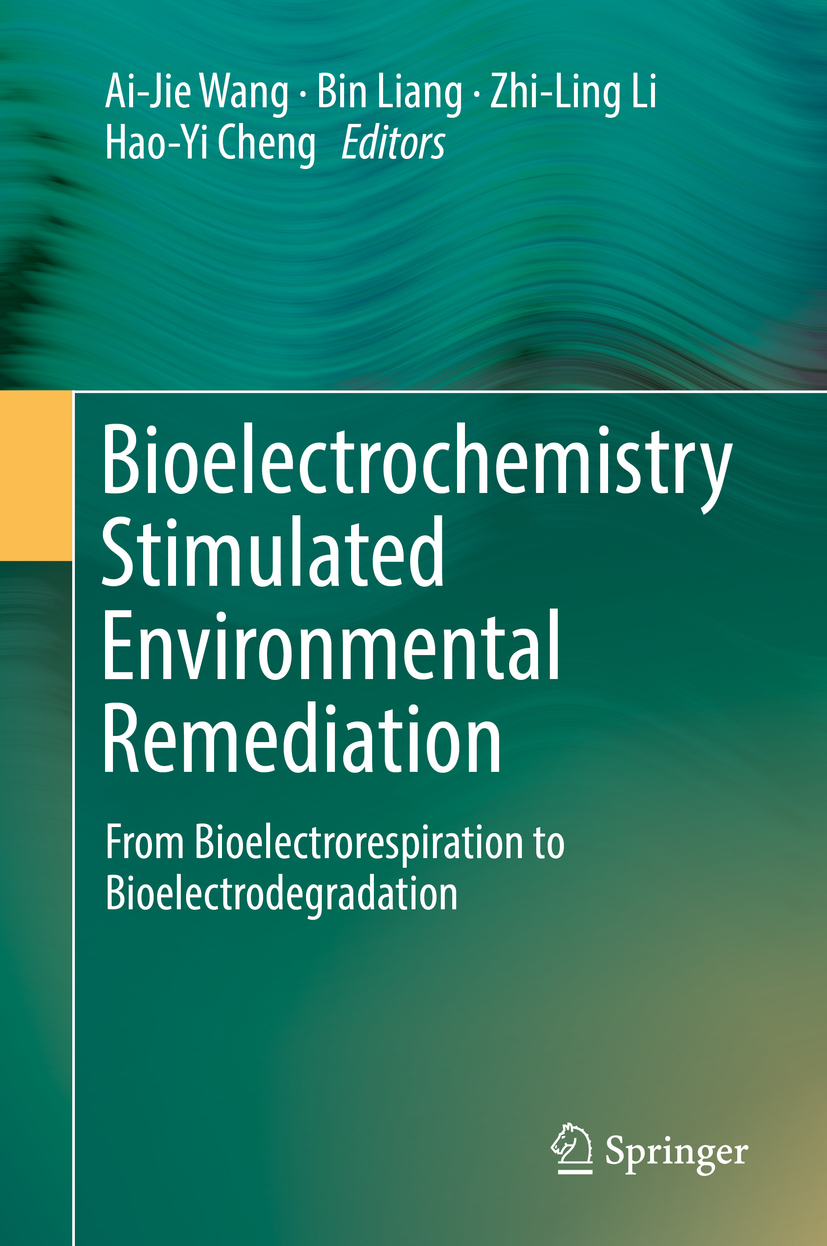

This Springer imprint is published by the registered company Springer Nature Singapore Pte Ltd.
The registered company address is: 152 Beach Road, #21-01/04 Gateway East, Singapore 189721, Singapore
No doubt, there is an urgent need for advanced treatment of recalcitrant environmental chemicals. The general public gets every day more concerned, and even nervous, about various types of so-called micro-pollutants . Actually, chemical pollutants in the effluents of used water treatment plants are often still a factor 10100 times above the Predicted No Effect Level (Margot et al., WIREs Water 2015, 2:457487). Several micropollutants remain unchanged even after long-term bank filtration (Hamann et al., Sci. Total Environ. 2016, 545:629640). To preserve the quality of life of the next generations, we need to come to new developments which open perspectives to bring forward strongly enhanced environmental remediation. We should not be at ease about this.
Scientific curiosity has, about two decades ago, re-launched the generic interest in bioelectrochemistry (Park and Zeikus, Appl. Environ. Microbiol. 2000, 66:12921297). The developments have ever since been startling and exponential in terms of perspectives and potential applications. Not only the insights in basic microbiology but also the progress in various aspects of technology have allowed to think forward with respect to new types of treatments of various environmental pollutants. Time has come to implement the excellent scientific progress into valuable applications which will demonstrate to the general public the significance of basic and applied research, particularly in this interphase where biology and electrochemistry meet in a most intriguing way.
This book is in many respects remarkable. It brings together in a comprehensive way the various advances of bioelectrochemistry in relation to environmental technology. It covers not only various aspects of microbial insights on physiology and ecology, but bridges these with the engineering and the implementation of various types of reactor systems. It addresses issues concerning a variety of contaminants. Moreover, it covers a whole set of matrices ranging from clean to polluted and from liquid and solid environments, such as drinking and wastewaters, industrial wastes, sediments, and soils. Search and you will find your topic of interest.
Most importantly, this book has the ambition to generate further scientific and technologiccal endeavor; it stimulates to think break new grounds. The demands for better environmental quality are of such nature and such priority that all of us should embark on renewed fresh thinking about what potentials this dynamic field will reveal in the future. We should dare to hope that this is the beginning of the combination of a variety of new developments in microbial, electrotechnical, and environmental upgrading.
Electron transfer is an essential process for life which is vital to nearly all cell metabolisms. Different electron transfer pathways related to substrate metabolism, energy metabolism, cofactor recycling, and aerobic/anaerobic respiration have been identified in prokaryotic cells. However, most of these electron transfer processes occurred intracellularly, and most of the electron acceptors are water soluble molecules or gases. Surprisingly, it was found that some bacterial species had a very unique electron transfer process by using the solid metal oxide or conductive material as the electron acceptor [].
Font size:
Interval:
Bookmark:
Similar books «Bioelectrochemistry Stimulated Environmental Remediation»
Look at similar books to Bioelectrochemistry Stimulated Environmental Remediation. We have selected literature similar in name and meaning in the hope of providing readers with more options to find new, interesting, not yet read works.
Discussion, reviews of the book Bioelectrochemistry Stimulated Environmental Remediation and just readers' own opinions. Leave your comments, write what you think about the work, its meaning or the main characters. Specify what exactly you liked and what you didn't like, and why you think so.

